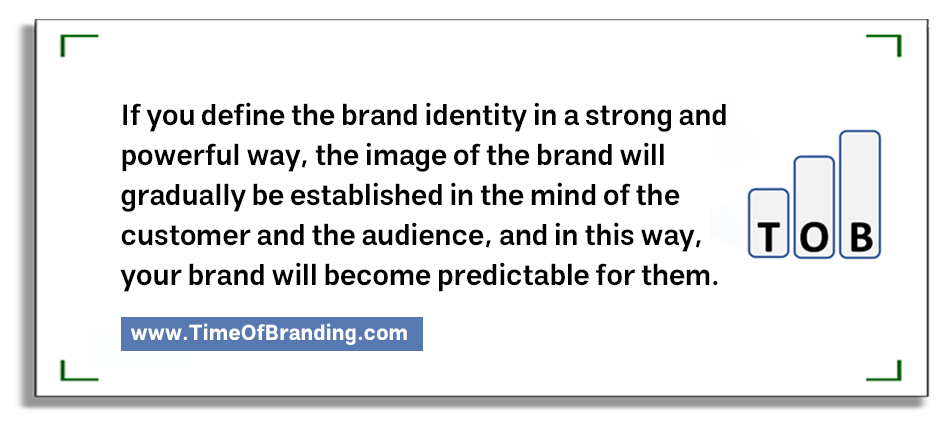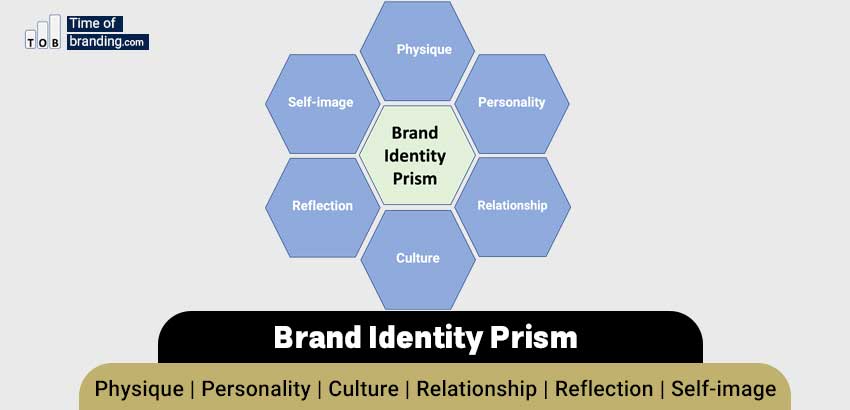Brand identity is one of the most important topics in branding, and there are many misconceptions and misunderstandings about it.
Some people limit the brand identity to the visual indicators of the brand.
When you ask a company executive if they’ve worked on their company’s brand identity, you’re not likely to hear, “Yes. we have worked We have chosen the standard color of our company and all envelopes, letterheads and business cards have been designed accordingly. Our company even has its own special smell, and we regularly spray it all over the place.”
Those who work on their personal brand also fall into this trap. In this way, in the first steps of branding, they get involved in designing a logo for themselves and feel that they cannot start building their own brand without a logo.
Of course, these are parts of the brand identity; But they are not the main part and the concept of brand identity is rooted in another need.
In this article, we explain the definition of brand identity in a simple way and explain its difference with another key concept, i.e. Brand Image. (Because sometimes these two concepts are confused).
Then, in an independent lesson, we will discuss how to create an identity for the brand.
Kapferer and brand identity
As mentioned in the article on brand positioning, one of the first approaches to branding was the definition of brand positioning, which was proposed in the eighties by Al Reyes and Jack Trout.
Their view on branding was more than competitive. The whole concern of El Reyes and Jack Trout was that
Where do you stand when compared to others?” and “Try to be higher on the competition ladder” and “Being second in a market is not much different than not being in that market.”
A few years later (in 1986), Kapferer, who is considered one of the elders in the field of brand and branding, proposed a new discussion that was highly welcomed and today, it has become a constant discussion of branding experts.

Kapferer spoke of brand identity. He said:
Brands, like people, have an identity.
Of course, Kapferer did not reject the discussion of positioning. Rather, he said that branding has two bases:
- One foundation is to define your own identity independently
- The other foundation is to find your place in comparison with others
Brand identity is not even the thoughts and views of others about the brand; Rather, it is the perception that the brand itself has of itself.
What others think about your brand is your brand image and not your brand identity.
So when you form a market research group and ask the opinion of all the people and customers about the brand, you get to know the brand image, but when you think about your brand in private and decide about its different aspects, you are involved in the brand identity.
Are brand image and brand identity unrelated?
It cannot be said that these two concepts are independent of each other.
After all, you behave and make decisions based on the identity you have defined yourself, and these behaviors and decisions create an image of your brand in the customer’s mind.
The dream state is that the brand image is close to the brand identity, but this is not necessarily the case. Because many factors can affect the brand image.
Ask the Porsche company who drives a Porsche and what is the identity that you consider for Porsche drivers? Then go among the people of a certain country and see what image most of them have of Porsche drivers. True or false, the image of the Porsche brand in the minds of the audience of that country is different from the identity of the Porsche brand and is not the same.
There are other reasons that can cause the brand image to be different from the brand identity. For example, the identity you define for your brand may be far from the reality of your brand, and you may not be able to implement that identity in practice. In this situation, customers will remember an image of the reality of your brand and have nothing to do with how you have defined and drawn your brand identity on paper.
On what basis is brand identity defined?
Kapferer considers:
1- The first feature of brand identity as Brand Values.
- What things are valuable to your brand?
- What principles do you always follow?
- When your logo is going to be registered on a product, what features should that product have?
2- The second feature mentioned by Kapferer is Brand Vision.
- Why did you create this brand?
- What was the empty place in the market that needed to create your brand?
- Where does this brand want to go in the end?
- What will the market lose if this brand is removed from the market?
If you know the answers to these questions and, in fact, have defined your brand identity, now the answers to many questions will be simple for you:
- Do I need to sponsor the event of…? (How consistent is it with the principles, values and vision of my brand?)
- Can I offer the new product of… with the same brand? Or should another independent brand be created?
- Does this advertising campaign fit with my brand identity?
- Does my communication style with the client and the audience read with this identity that I have defined? Do my messages confirm and reinforce this identity?
- Can I go to new markets with this brand? Doesn’t presence in those markets conflict with my brand identity?
In other words, it can be said: whenever you get confused in answering these questions, you can conclude that you have not been strong in defining your brand identity.
Brand identity is gradually established
It is usually seen that children and teenagers change their patterns quickly and their behavioral habits and preferences change from day to day.
Adults use the term “identity crisis” to describe these changes.
Kapferer believes that even at the beginning of their life, brands may change their identity many times and cannot settle on a specific definition. But over time, the brand learns to build its own identity and define its boundaries and say “no” to some opportunities and take advantage of other opportunities and gradually stabilize.
So if you have created a brand and this brand has not yet found its identity in its early life, don’t worry too much. But it is important that “finding and establishing identity” is your concern and remember that until your brand finds its identity, it will not mature and you cannot expect a strong and stable image of your brand to form in the minds of the market and customers. .
A brand that has an identity is predictable

If you define the brand identity in a strong and powerful way, the image of the brand will gradually be established in the mind of the customer and the audience, and in this way, your brand will become predictable for them.
Predictability is a characteristic of a brand that has defined and strengthened its identity.
Suppose an actor has a strong personal brand and has defined the identity of that brand well. As a fan and audience of that actor (just like a customer of a product), you should be able to predict his behavior and decisions.
For example, if you see a social campaign, you should be able to guess whether that actor will join the campaign or not.
Or if you see another brand, can you predict if this actor is willing to work as an ambassador for this brand?
Big brands with a strong identity are so bound to their identity frameworks in saying yes and no to opportunities and capacities that their audience gradually learns and accepts these frameworks.
Visual identity is not the first step
You probably now understand well why you can’t start defining the identity by defining the logo and choosing the corporate color and designing the letterhead and business card.
A brand must first define its own:
- values
- vision
- philosophy
- goals
- frameworks.
Then use the logo as a sign so that the audience can see the logo anywhere and in any situation and on any product, to realize that all those values, visions, existential philosophy, goals and frameworks are respected here.
According to Kapferer:
Visual design is like working on a cart. If you don’t have a horse, if you only pay attention to the shape and appearance of the cart and keep changing it, that cart can’t take you anywhere.










